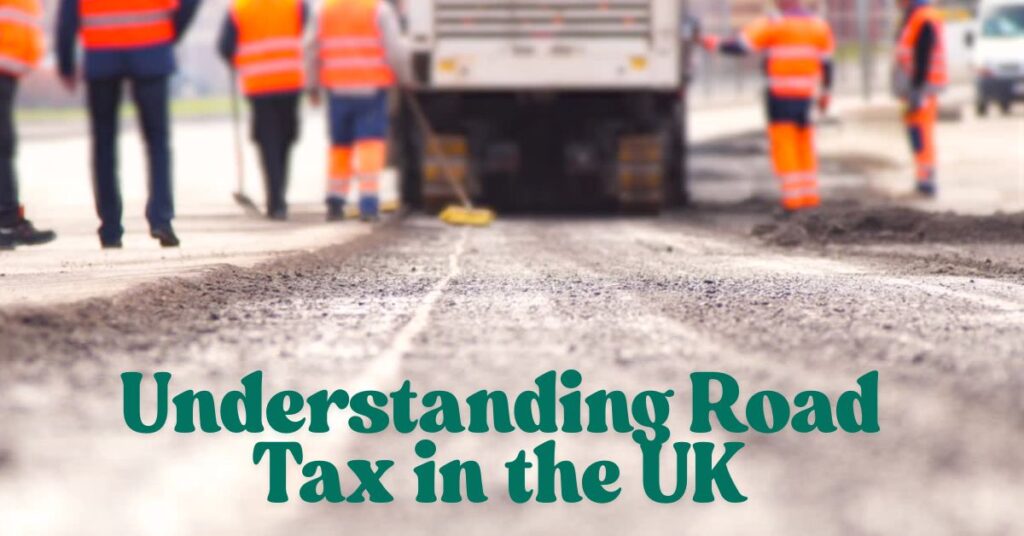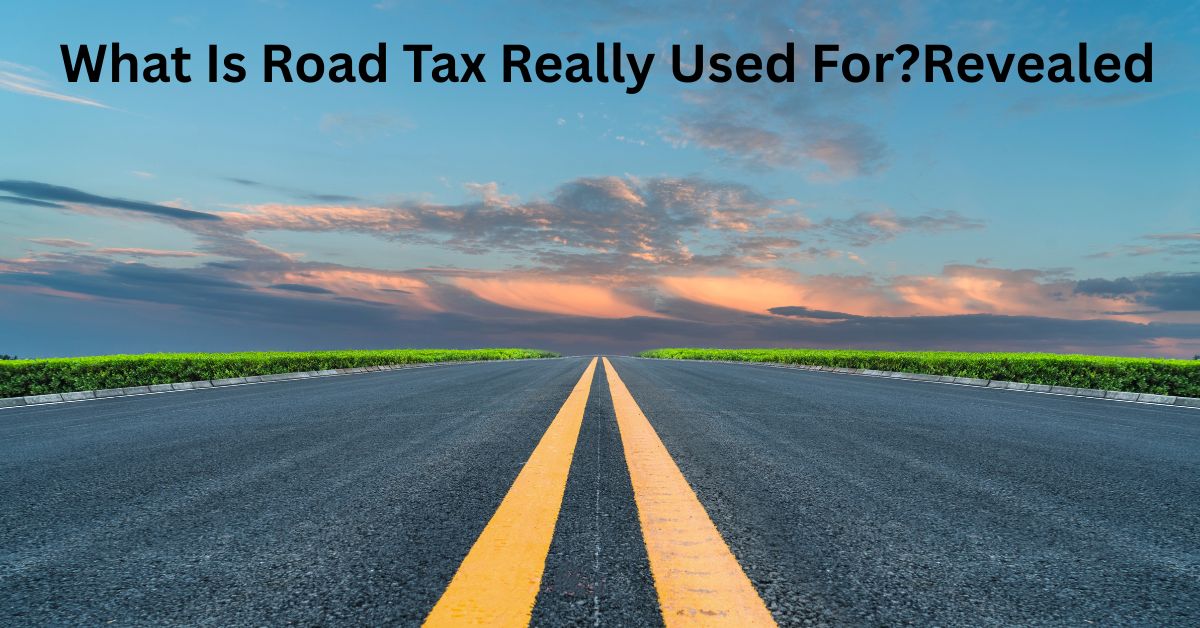What is road tax used for? That’s a question I often ask myself every morning as I dodge the same pothole on my street. If you’re in the UK (or United Kingdom), you might think your road tax—also known as Vehicle Excise Duty (VED)—goes toward fixing roads. But the reality may surprise you. The government doesn’t directly use it for maintenance. Instead, your hard-earned money is pooled into central funds and then distributed across various sectors, meaning those annoying bumps stay put no matter how much you pay.
The fact is, your vehicle’s CO2 emissions determine how much tax you owe annually, but there’s no guarantee it’s going to maintain our roads. This intricate system gets confusing because even though the funds are part of public spending, they aren’t funnelled into fixing the roads you use. Let’s dive into what really happens. The answer is simple but frustrating—it’s not always about the roads. Whether it’s the thousandth time you hit that bump or the first, you’re still wondering where your money went.
Understanding Road Tax in the UK

How Road Tax is Calculated and Why It Matters
Many drivers in the UK still assume road tax is used directly to fund road upkeep, but the reality is quite different. Vehicle Excise Duty (VED)—also called car tax—is an annual tax applied to motor vehicles operating on public roads. Contrary to its common name, VED is not tied to road repairs but instead contributes to the Exchequer as part of government revenue. Understanding what is road tax used for helps clear up confusion. Its primary purpose is to generate income for the state and to incentivise the use of low-emission vehicles by varying the tax amount based on CO2 emissions.
Factors that determine the rate of VED include the vehicle registration date, engine capacity, fuel type, and vehicle type—like motorcycles, commercial vehicles, or older cars. Generally, larger engines and vehicles that emit more CO2 incur higher VED rates, encouraging owners to opt for more environmentally friendly options. VED must be renewed each year, and non-compliance can lead to fines or even impoundment. Since it’s a legal requirement, failing to pay it not only affects your compliance with road regulations but may also disrupt your ability to keep your powered vehicle operating legally.
You might also like: Do Landlords Pay Council Tax on Empty Homes? Exposed
Where Does All the Road Tax Money Go?
Road tax, or Vehicle Excise Duty (VED), is often misunderstood. Many assume it goes directly into road maintenance, but the reality is more complex. The Exchequer, the central government’s consolidated fund, receives the revenue collected through VED. It then allocates this money based on national priorities, not just roads. Departments like the Department for Transport and Local Councils receive a portion of this funding, but so do areas like public services, transport, and the economy. Understanding what is road tax used for helps clarify that it serves broader government needs, not just potholes and resurfacing.
The Office for Budget Responsibility estimated that £7.2 billion was raised in 2022-23, growing to £7.3 billion in the following tax year, and is forecast to reach £9.4 billion by 2027/28. These figures show the significant source that VED represents. While Local Councils handle local road maintenance, and the Department for Transport oversees major infrastructure projects like motorways and new roads, the funds are part of a larger allocation system. This system supports essential services, existing roads, and traffic management systems. So, even though you might expect your car tax to contribute directly to the road you drive on, it’s really part of an intricate structure that ultimately benefits the entire UK.
How Road Tax Helps Improve Transport Infrastructure
Many people assume that their road tax only covers pothole repairs, but its role goes much deeper. Vehicle Excise Duty (VED) plays a crucial role in funding both national and local level infrastructure projects across the UK. At the national level, the Department for Transport works with the Highways Agency to manage the strategic road network, which includes initiatives like smart motorways, new road layouts, and the creation of entirely new routes. These projects are designed to enhance the efficiency, safety, and functionality of transport systems that support the nation’s economy and daily life.
At the local level, Local Authorities and Local Councils are responsible for maintaining roads within their jurisdictions. A portion of government budgets is allocated and distributed for activities like road resurfacing, bridge maintenance, and building new car parks. These development projects also include installing traffic management systems, which help reduce accident rates and improve traffic flow. The proper utilisation of these funds ensures road networks remain robust, efficient, and capable of meeting public demands. So whilst your road tax may not be tied to every visible repair, its contribution is vital to the long-term sustaining and enhancement of transport infrastructure.
How Road Tax Supports Environmental Sustainability
In the UK, road tax—officially Vehicle Excise Duty (VED)—is structured to promote environmental responsibility. Rates are influenced by CO2 emissions, meaning higher rates are imposed on more polluting cars, while lower rates are offered for low-emission vehicles. This system incentivises drivers to opt for greener options, thereby contributing to lower vehicle emissions and helping to combat climate change and air pollution. It’s a financially motivating tool in the UK’s broader strategy to encourage adoption of eco-friendly technologies and reduce environmental harm.
Some of the revenue from road tax is specifically allocated to support environmental initiatives like green transport and sustainable transport technologies. This includes investment in electric vehicle charging infrastructure, cycling and walking infrastructure, public transport enhancements, and subsidies for electric and hybrid vehicles. These projects not only help to reduce greenhouse gas emissions, but also enhance quality of life and public health. As more people switch from traditional cars to sustainable modes of transport, the benefits grow. Through ongoing research, innovation, and continuous improvement, these initiatives have a significant impact on creating a healthier environment for all.
How Road Tax Contributes to Public Transport Development
When people think of road tax, they often assume it’s exclusively used for road repairs. But in reality, Vehicle Excise Duty (VED) plays a crucial role in supporting public transport development and maintenance across the UK. A portion of this funding is allocated to vital services like bus services, rail network improvements, and public transport hubs. These initiatives are designed to improve connectivity, efficiency, and reliability—especially for those who rely on public transit in their daily use. In rural areas, subsidies for rural transport help provide access to remote communities, tackling social isolation and promoting inclusion.
The Treasury uses the revenue from VED to maintain and expand transport systems for the benefit of citizens, including disabled passengers through accessibility projects. One notable aspect of this system is the discounted rate of road tax for buses, given their high capacity and role in public transportation. This helps bus companies lower operational costs, enabling them to offer more affordable services and reach more areas. The impact of this investment is significant, as it enhances the overall quality, sustainability, and inclusivity of public services in the UK—ensuring that transport remains functional, accessible, and responsive to the needs of all.
Other Important Uses of Road Tax Revenue
Many people associate road tax only with road maintenance or public transport, but Vehicle Excise Duty (VED) actually extends its reach far beyond these functions. The government uses road tax revenue to support initiatives aimed at enhancing road safety and traffic management, especially in urban areas. Funds are allocated to schemes that alleviate congestion, enhance the flow of traffic, and reduce risks for road users. These investments include traffic congestion relief schemes, road safety campaigns, and emergency response improvements, all working to make transport safer and more efficient for everyone.
Further, MOT enforcement and vehicle inspection programmes—also funded by road tax—help maintain the reliability and safety of vehicles. The economic impact of such essential programmes is substantial, as a safer, smoother transport system supports greater productivity. Quicker emergency response times can even potentially save lives, while ongoing research into traffic flow and management helps pave the way for innovative solutions to future challenges. By funding these diverse areas, VED ultimately contributes to the sustainable development of the UK’s broader transport infrastructure.
Conclusion
Understanding road tax in the UK reveals its critical role in supporting various transportation and environmental initiatives. More than just a fee, Vehicle Excise Duty, which is primarily based on CO2 emissions, is essential for both national infrastructure and local infrastructure. This includes maintenance, enhancements, and public transport upgrades that serve communities across the country.
In conclusion, the revenue collected from road tax also supports green transport, traffic management, and public services that contribute to sustainability and public welfare. This comprehensive allocation doesn’t just maintain roads—it helps foster green initiatives and deliver better systems for everyone. So, when asking, “what does road tax pay for in the UK“, the answer lies in its broad reach: from infrastructure projects to environmental improvements, all designed to ensure lasting progress.
FAQs
1. What is road tax used for in the UK?
Road tax, or Vehicle Excise Duty (VED), is primarily used to fund a range of government initiatives including transport infrastructure, public transport, environmental sustainability, traffic management, and road safety—but not directly for fixing roads.
2. Does road tax pay for pothole repairs?
Not directly. Although many believe road tax goes toward pothole repairs, the funds are actually pooled into the Exchequer and then distributed to various sectors based on national priorities.
3. How is road tax (VED) calculated?
VED is calculated based on several factors including CO2 emissions, engine size, vehicle type, fuel type, and registration date. Higher-polluting vehicles usually pay more.
4. Who manages the money collected from VED?
The Exchequer, which is the UK government’s central fund, receives the VED revenue. It allocates funds to departments like the Department for Transport, Local Councils, and other essential services.
5. Does any of the road tax support public transport?
Yes, a portion of road tax helps fund bus services, rail network improvements, rural transport subsidies, and accessibility projects, making public transport more inclusive and reliable.
6. How does road tax support environmental goals?
Road tax incentivises the use of low-emission vehicles by imposing lower rates. It also funds electric vehicle infrastructure, cycling and walking routes, and green transport technologies.
7. Is road tax a legal requirement in the UK?
Yes, VED is mandatory for most vehicles in the UK. Failing to pay it can result in fines or vehicle impoundment and affect legal operation of your vehicle.
What infrastructure projects are funded by VED?
VED supports major infrastructure developments such as smart motorways, bridge maintenance, new road layouts, and traffic management systems across the UK.
9. Does road tax revenue help with traffic congestion?
Yes, part of the revenue is used for traffic congestion relief schemes, road safety campaigns, and emergency response improvements, all designed to improve traffic flow and public safety.
10. How much road tax revenue is generated annually?
In 2022–23, the UK raised about £7.2 billion from VED, increasing to £7.3 billion the following year. It’s forecasted to reach £9.4 billion by 2027/28, showing its importance as a funding source.


3 thoughts on “What Is Road Tax Really Used For? Revealed”